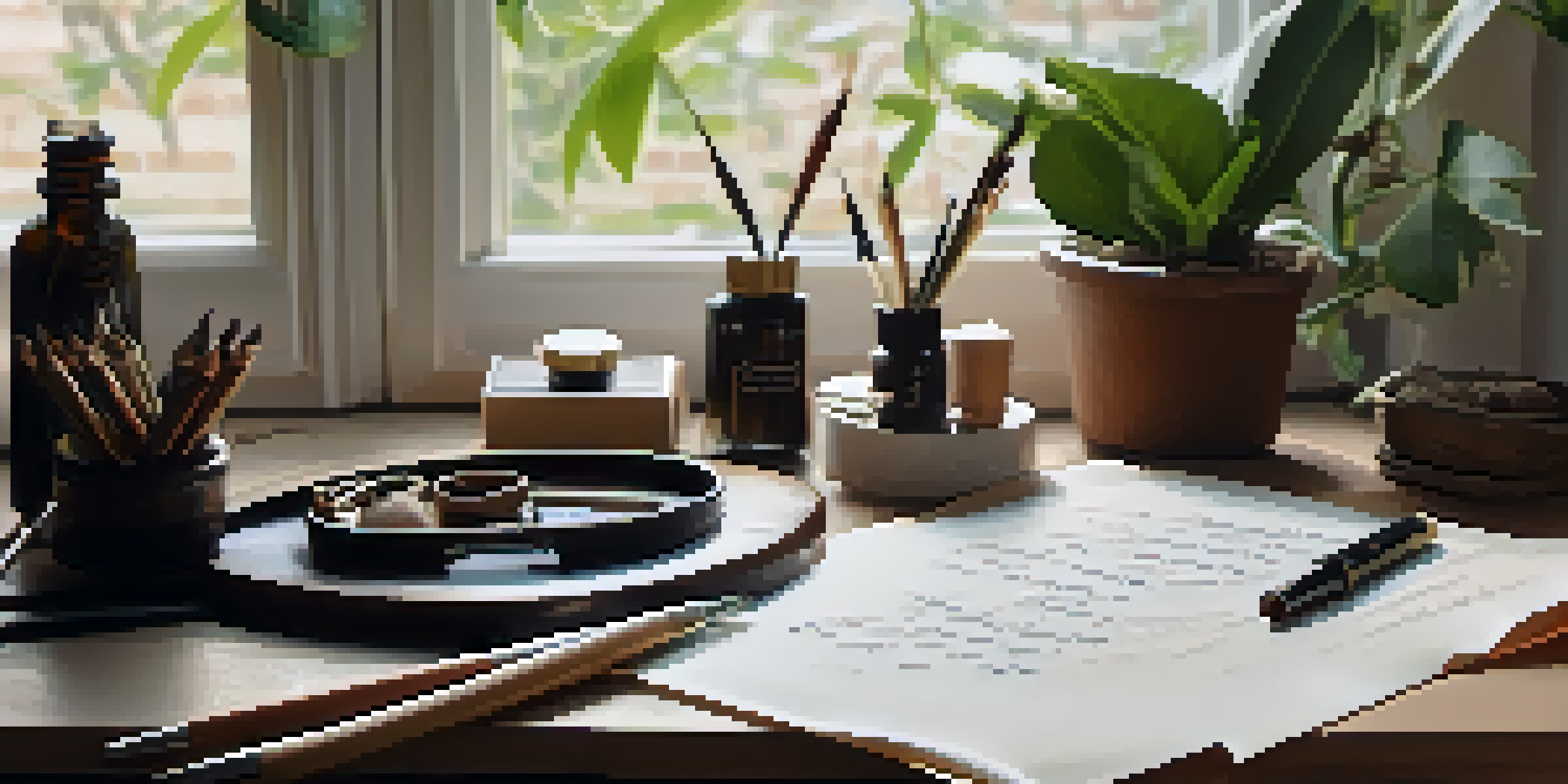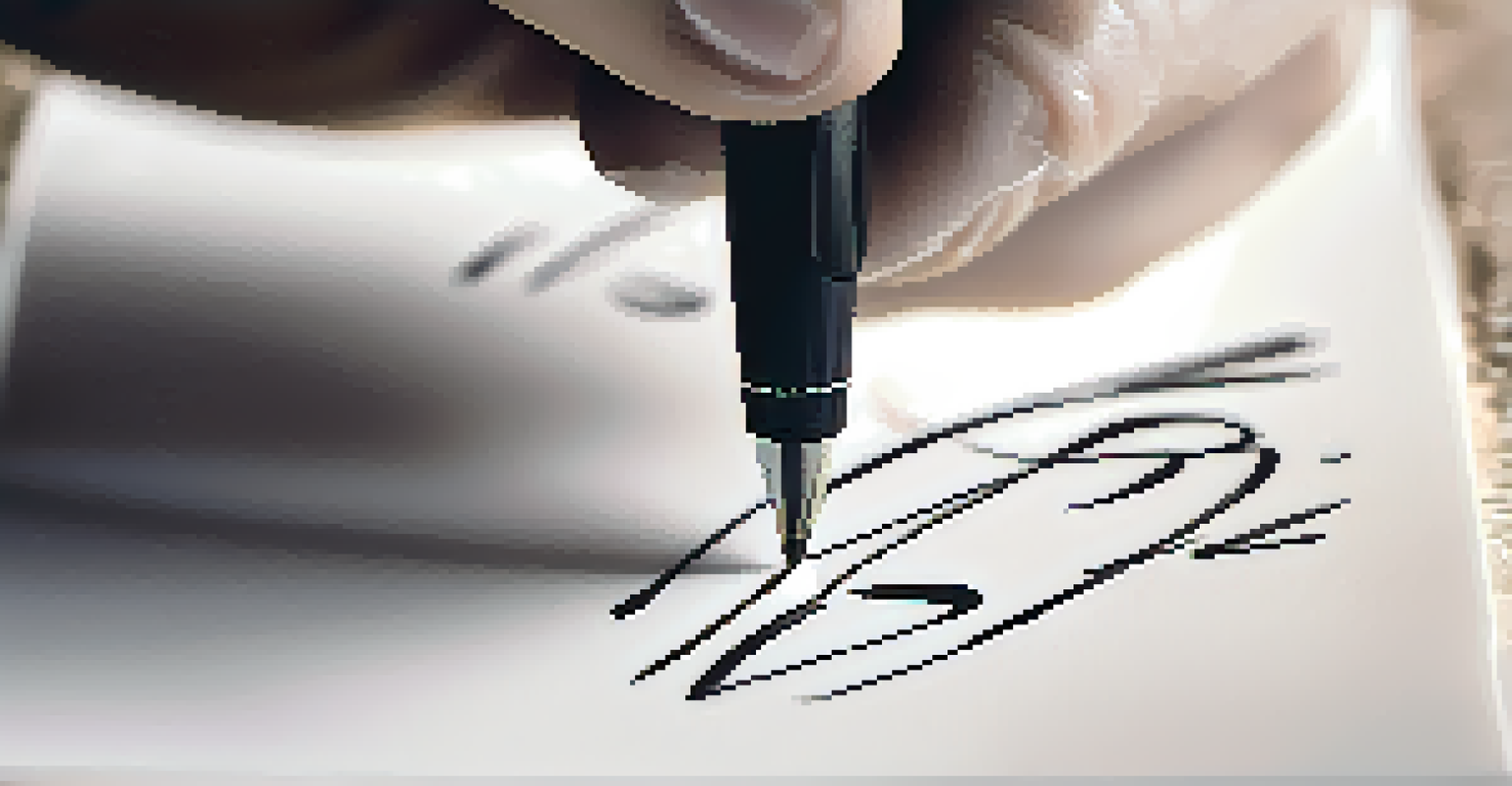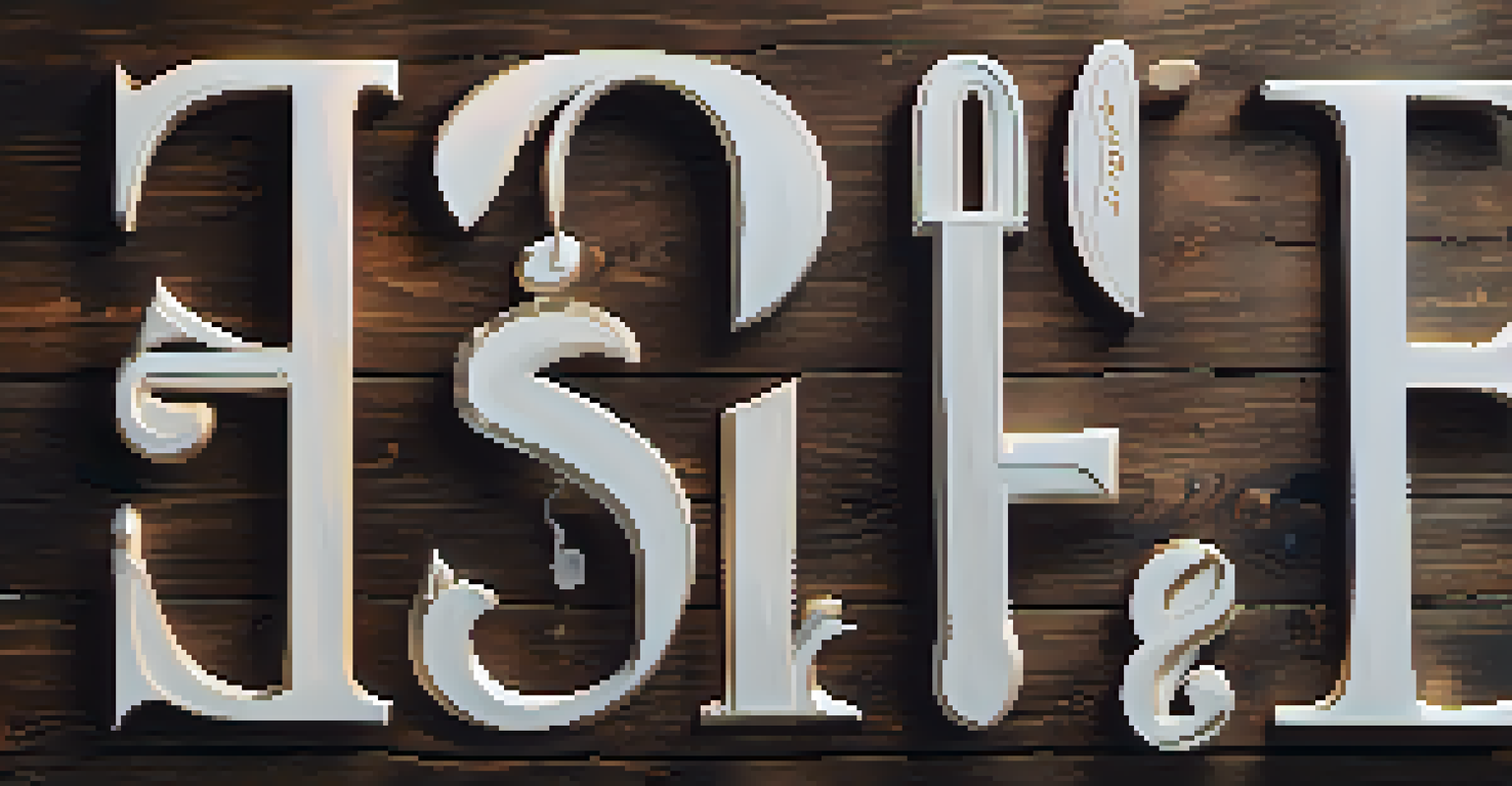Calligraphy for Beginners: Step-by-Step Guide to Start

Introduction to Calligraphy: What You Need to Know
Calligraphy is more than just beautiful writing; it's an expressive art form that combines creativity and technique. Understanding the basics can help you appreciate this craft and its rich history. Whether you're interested in creating personalized invitations or simply want to explore a new hobby, calligraphy opens doors to endless possibilities.
Calligraphy is a form of expression that transcends language and culture, allowing us to communicate beauty and emotion through ink and paper.
At its core, calligraphy involves forming decorative lettering with a broad-tipped instrument, brush, or other writing instrument. This unique style not only enhances the visual appeal of written text but also allows for personal expression through various styles. From elegant scripts to modern interpretations, there's a calligraphy style for everyone.
Before jumping in, it's essential to know that calligraphy requires practice, patience, and the right tools. With the right mindset and resources, you can embark on this creative journey and develop your own unique flair in calligraphy.
Essential Tools and Materials for Beginners
Starting with the right tools can make a significant difference in your calligraphy journey. Basic supplies include calligraphy pens (like dip pens or brush pens), various types of ink, practice paper, and guidelines. Choosing the right paper is crucial, as it affects how the ink flows and the overall final look of your work.

For beginners, a simple calligraphy kit is often the best choice, as it usually includes everything you need to get started. Look for kits that come with instructional materials or online resources to help you learn. Don’t hesitate to experiment with different pens and inks to find what feels comfortable for you.
Calligraphy as an Expressive Art
Calligraphy is a creative blend of technique and artistry, allowing for personal expression through various styles.
As you progress, consider investing in higher-quality materials that suit your evolving style. Remember, the goal is to enhance your experience and joy in creating beautiful letters, so choose tools that inspire you.
Understanding the Basic Calligraphy Styles
Calligraphy features various styles, each with its own unique characteristics and flair. Some popular styles include Copperplate, Gothic, and Modern Calligraphy. Familiarizing yourself with these styles can help you choose one that resonates with you and inspires your practice.
The art of writing is the art of discovering what you believe.
Copperplate is known for its elegant, flowing lines and is often used in formal invitations. Gothic, on the other hand, features bold, angular letters that convey a sense of strength and historicity. Modern calligraphy breaks away from traditional rules, allowing for personal interpretation and creativity.
As a beginner, don't feel pressured to stick strictly to one style. Experimenting with different styles can help you discover your preferences and develop a personal touch that makes your calligraphy unique.
The Importance of Practicing Basic Strokes
Before diving into full letters and words, practicing basic strokes is essential. These fundamental movements form the building blocks of all calligraphy scripts. By mastering these strokes, you'll gain better control over your pen or brush, which is crucial for creating consistent and beautiful letters.
Start with simple shapes like straight lines, curves, and loops. Set aside time each day to focus on these strokes, gradually increasing your speed and precision. As you become comfortable, you can move on to combining these strokes to form letters and eventually words.
Essential Tools for Beginners
Starting with the right tools, like calligraphy pens and practice paper, significantly enhances the learning experience.
Remember, practice leads to improvement. Be patient with yourself, and celebrate the small victories as you develop your skills and confidence in calligraphy.
Creating Your First Calligraphy Letters
Once you've practiced basic strokes, it’s time to start creating actual letters! Begin with simple letters that have similar stroke patterns, such as 'a,' 'c,' and 'e.' This approach can help you build muscle memory and improve your overall letter formation.
As you practice, focus on consistency in size, spacing, and angles. Use guidelines on your practice paper to help maintain uniformity. Don't be discouraged if your first attempts don't look perfect; remember, every artist starts somewhere!
With time and dedication, you'll see your letters transform from shaky scribbles to elegant forms. Embrace the learning process, and enjoy the satisfaction of seeing your progress as you refine your calligraphy skills.
Combining Letters to Form Words and Phrases
Now that you've mastered individual letters, it's time to combine them into words and phrases. Start by practicing common words that are meaningful to you, such as your name or inspirational quotes. This helps you apply what you've learned in a meaningful way.
Pay attention to the flow and connection between letters, as this will enhance the overall aesthetic of your work. Experiment with different spacing and styles to discover what feels right for your artistic vision. Don't hesitate to try connecting letters in various ways to create a unique look.
Practice is Key to Mastery
Regular practice of basic strokes and letter formation is crucial for developing confidence and skill in calligraphy.
Creating words is where the magic of calligraphy truly shines. As you practice forming phrases, you’ll gain confidence and develop your own distinct style, making your calligraphy even more personal and expressive.
Taking Your Calligraphy Skills to the Next Level
As you gain confidence in your skills, consider exploring advanced techniques and styles. Techniques like flourishing—adding decorative swirls and embellishments—can elevate your calligraphy to new heights. Online tutorials and workshops can provide inspiration and guidance for these advanced methods.
Additionally, joining a calligraphy community, either in-person or online, can foster growth and motivation. Engaging with fellow calligraphers allows you to share tips, seek feedback, and discover new styles and techniques. Collaboration can be a powerful motivator in your artistic journey.

Remember, calligraphy is a lifelong learning experience. Embrace the journey, continue to experiment, and let your creativity flourish as you take your skills to the next level.